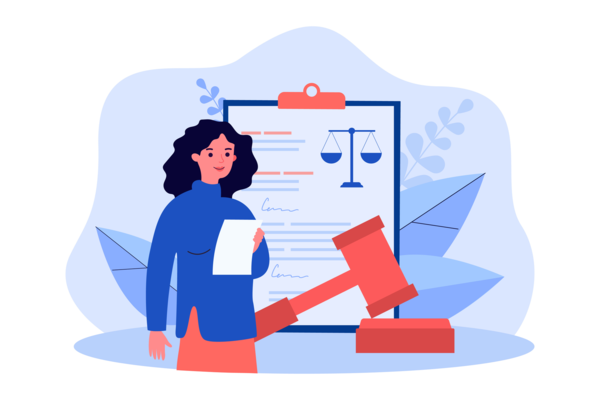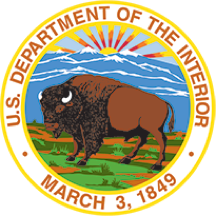Best practices
Ideas and resources for delivering better digital experiences
Best practices can help jumpstart digital service delivery efforts. Agencies and teams across the federal government frequently share resources, case studies, and learnings that other practitioners can put into practice. Using best practices contributes to less guesswork and streamlined, consistent experiences for users.
Related Policy
Requirements for delivering a digital-first public experience

Best practices: Essential knowledge
-
Timeless top 10 best practice for great government websites
Explore fundamental best practices for delivering federal websites and digital services.
-
Federal website standards
The federal website standards help agencies provide high-quality, consistent digital experiences for everyone. They cover common visual technical elements and reflect user experience best practices.
-
Use the U.S. Web Design System Maturity Model
Understand how to adopt the design system incrementally and build better digital experiences.
-
Understanding the Digital Analytics Program
The Digital Analytics Program (DAP) offers advanced, easy web analytics for federal agencies. All public-facing federal websites can participate.
Best practices events
The Basics of Buying Accessible Products and Services
Best practices news
You’ve launched, now what? Planning for the future of your content
Creating quality digital content is not a one-time endeavor. Explore these approaches to managing and improving excellent digital content over time.
Tips for building a small, scrappy digital team
Explore hiring strategies, how to leverage contractors, and creative approaches for building your digital team.
Are social media influencers right for your digital media campaign?
Learn how to work with social media influencers to achieve your goals, while accounting for different budgets.
Building a culture of customer experience across government
The Life Experience teams contain lessons for establishing a culture of customer experience in government, shifting to a focus on organizational practices.
How our developers and accessibility specialists work together
Planning for accessibility is critical to creating more inclusive digital experiences. Discover how developers and accessibility specialists from USA.gov collaborate early in the development process to ensure that their government websites are accessible for everyone. By following established accessibility standards, such as the Web Content Accessibility Guidelines (WCAG) and Section 508 of the Rehabilitation Act, USA.gov proactively reduces the need for later fixes.— via USA.gov

Resources on Best practices
-
Moving to .gov
If you’re moving to .gov from another top-level domain, like .com, .org, or .us, here are some best practices to help you plan that transition.
-
Introduction to self-description
Help create inclusive digital spaces with these tips for using self-descriptions in virtual meetings or conference calls.
-
Guidelines for Digital.gov event presenters
A checklist of requirements for people who are presenting at a Digital.gov event.
-
Cloud Smart: Federal Cloud Computing Strategy
Founded on three key pillars of successful cloud adoption—security, procurement, and workforce—the Cloud Smart strategy includes 11 action items from the Chief Information Officers (CIO) Council.
More News and Events on Best practices
61 posts
You’ve launched, now what? Planning for the future of your content
Creating quality digital content is not a one-time endeavor. Explore these approaches to managing and improving excellent digital content over time.
Tips for building a small, scrappy digital team
Explore hiring strategies, how to leverage contractors, and creative approaches for building your digital team.
Are social media influencers right for your digital media campaign?
Learn how to work with social media influencers to achieve your goals, while accounting for different budgets.
Building a culture of customer experience across government
The Life Experience teams contain lessons for establishing a culture of customer experience in government, shifting to a focus on organizational practices.
How our developers and accessibility specialists work together
Planning for accessibility is critical to creating more inclusive digital experiences. Discover how developers and accessibility specialists from USA.gov collaborate early in the development process to ensure that their government websites are accessible for everyone. By following established accessibility standards, such as the Web Content Accessibility Guidelines (WCAG) and Section 508 of the Rehabilitation Act, USA.gov proactively reduces the need for later fixes.— via USA.gov

A revised and expanded guide for de-risking government technology projects
18F recently launched an updated version of the 2020 De-risking Government Technology Guide, offering a new section on vendor management, and combining the State Software Budgeting Handbook and Federal Field Guide into one unified resource. The guide offers practical methods for reducing risks in government tech projects, drawing from 18F’s experience and state employee input. This revision reflects the evolving needs of government agencies, providing key insights on custom software development, vendor collaboration, and performance-based contracting.— via 18F

How multicultural research guides the USA.gov benefit finder
Discover how USA.gov tailors its benefit finder experience for both English and Spanish-speaking users through culturally nuanced content. Through dual-track language research, a bilingual support team, and A/B testing, USA.gov ensures that more users receive relevant, empathetic, and user-friendly content. The USA.gov team also identified and addressed recruitment challenges to interatively improve its ongoing research processes.— via USA.gov

How Login.gov uses roadmapping to build trust with its partners and the public
To increase transparency, the Login.gov team publishes a program roadmap that lays out their upcoming initiatives.
User research and the Paperwork Reduction Act
User research is an important part of customer experience transformation. Different types of research require different approval under the Paperwork Reduction Act (PRA). Through seven case studies, the U.S. Digital Service shows how agencies conducted valuable user research that did not require PRA approval and successfully integrated findings into their projects. Their work illustrates how thoughtful user research transforms delivery of services and helps agencies build trust in government.— via U.S. Digital Service

10 years of the U.S. Digital Service: Transforming government for the digital age
Over the past decade, the U.S. Digital Service (USDS) has collaborated with more than 30 federal agencies to create user-friendly, reliable, and seamless digital experiences. Their work prioritizing human-centered design and engineering includes improving services for veterans with Veterans Affairs, launching the Internal Revenue Service Direct File Pilot, and supporting the Centers for Disease Control and Prevention during the COVID-19 pandemic. Looking ahead, USDS remains committed to building trust, fostering innovation, and scaling digital capacity across the federal government, ensuring better service for all Americans.— via The White House

Department of Justice recognizes anniversary of executive order to improve access for people with limited English profiency
The Department of Justice recently marked the 24th anniversary of Executive Order 13166, which aims to improve access to federal services for individuals with limited English proficiency (LEP). Its Civil Rights Division reviewed language access plans across federal agencies, emphasizing progress in hiring and staff training, improving language assistance services, and expanding multilingual content. The department is committed to eliminating language barriers in federal programs, improving communication and access for all communities.— via Department of Justice

Developing an easier way to recruit user research participants
USA.gov and 10x recently partnered to develop a new user research recruitment page. The page launched in February 2024 and has attracted hundreds of sign-ups. It allows participants to assist in testing government websites for compensation, and helps teams find participants that match needed demographics. By simplifying the process and expanding recruitment of diverse populations, the initiative aims to support and streamline user research. It plans to add recruitment opportunities in additional languages and recruit more specific audiences for future studies.— via USA.gov

Reassessing priorities: Adapting to additional work without additional resources
The Office of Natural Resources Revenue’s Open Data, Design, and Development (ODD) team is taking on management of a fourth website, despite being short-staffed. As a result, they have revisited and reprioritized their yearly goals. To do so, they utilized a prioritization matrix, developed a structured impact assessment, and laid out a transition plan. Their process ensured realistic workload adjustments, improved team morale, and highlighted the importance of practical goal-setting, especially when teams are short-staffed.— via Office of Natural Resources Revenue

Introducing the Department of Homeland Security customer experience toolkit
The Department of Homeland Security’s Customer Experience Directorate developed a customer experience (CX) toolkit to help agencies implement CX strategies using a human-centered design approach. The toolkit offers resources to enhance service delivery, processes, and systems, following a “Ready, Set, Grow” framework for planning and implementation. It aims to serve as a reference for organizations bringing CX practices to their own agencies.— via Department of Homeland Security

Designing for people with disabilities
The User Experience (UX) team at USA.gov’s Public Experience Portfolio recently conducted a study to analyze the experiences of individuals who access USA.gov through assistive technology. The team partnered with a local organization to gather insights from a diverse group of participants, many of whom are blind or deaf. The study revealed various habits and challenges faced by these users, such as a preference for mobile sites, difficulty with website carousels, and a reliance on clear headings and action-oriented descriptions. These findings can guide improvements in accessibility, such as clever link labeling and better navigation aids for assistive technology users.— via USA.gov

18F’s engineering craft practices at 10
18F recently celebrated its 10th anniversary by renewing its commitment to refining and sharing best practices through regular publications, tech talks, and updates to the 18F Engineering Guide. They also created a permanent principal consulting engineer role to enhance digital service delivery and support skill development within the organization.— via 18F

18F’s engineering craft practices at 10
18F recently celebrated its 10th anniversary by renewing its commitment to refining and sharing best practices through regular publications, tech talks, and updates to The 18F Engineering Guide. They also instructed a permanent principal consulting engineer role to enhance digital service delivery and support skill development within the organization.— via 18F

A small team’s journey through digital maturity
As a small team, Digital.gov adopted user research and customer experience early. That foundation helps develop evidence-based strategies for today.
Bridge the gap between policy and implementation: Impactful solutions and strategies for success from Digital.gov’s spring 2024 summit
The summit highlighted digital transformation, emphasizing the significance of recent OMB memos for improving accessibility and customer experience.
Digital front door: Expanding access to VA
More Veterans are turning to the U.S. Department of Veterans Affairs (VA) for healthcare and benefits, accessing these services online through tools like the VA Health and Benefits mobile app and VA.gov. With over 2.28 million app downloads and 17.8 million monthly visitors on VA.gov, these digital tools provide faster, easier, and more inclusive access to VA services. Learn more about how these technologies are often Veterans’ first interaction with VA by watching their latest video, Digital Front Door: Expanding Access to VA.— via U.S. Department of Veterans Affairs












